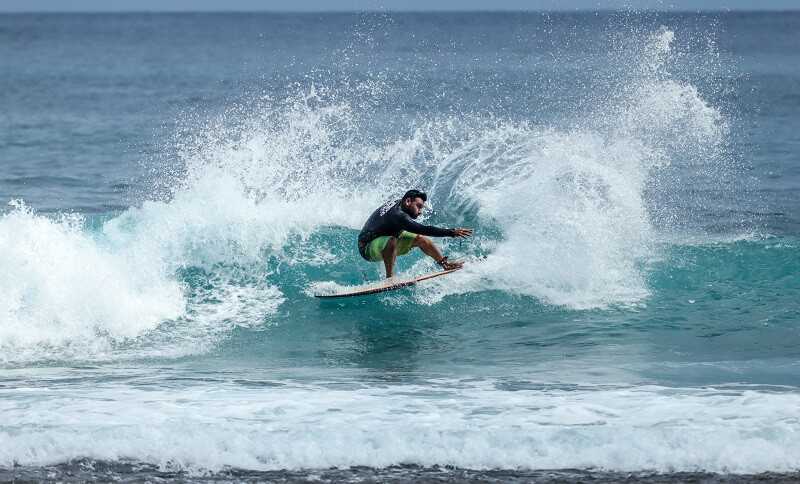4 min read

Swing trading or day trading? Where is the difference?
For some new trader, day trading and swing trading are like two different movie roles.
Day traders open and close many positions in a frame of one day. On the other side, as a totally different character, is a swing trader. Such a trader takes trades that last many days or months.
The different styles satisfy different types of traders. It depends on some factors such as the type of market, how much time they want to spend on trading, or what characteristics they have as traders.
Normally, both methods have the same goal: to make a profit grown on price changes in the market.
First of all, you should know all the features of your trading system. You have to feel comfortable when trade and you must profit from it.
Never ever pick your trading system randomly. Or because it works for someone.
Why is that?
Because the trading system is like a pair of gloves. The only one will suits you the best.
Your trading system must meet your temperament.
It isn’t about that swing trading is better than the day trading. It is all about which method satisfies a trader’s individual goals.
Some traders will adopt swing trading, but others will use day trading.
Day trading is good for traders who want quick returns. For example, a day trader risks 1% of funds on each trade. If there are loses, the trader loses 1%.
What does happen if a trader win?
A trader will make 2%. Do you know why?
Reward to risk ratio is 2:1.
Assume the day trader wins 50% of trades. And the trader makes, for example, 6 trades in one day. That will be in the final score 3% on the account balance. Yes, minus trading fees.
Well, with making 1% per day the trader will increase trading account by more than 200% per year.
Wait, nothing is so easy!
On the other side of the medal is that you can very fast drain your trading account if you opt day trading.
How?
Let’s see!
You must have winning trades twice more than lost trades. At the same time, you have to win 50% of all the trades you take.
Tell now is it easy!
Swing trading collects gains and losses increased gradually.
The purpose of swing trading is to take larger price moves than it can be found as intraday price performance.
In other words, swing trading has based on the fact that the price does not run in a continuous course.
For you to have a clear picture.
Have you ever see the waves on the ocean?
That’s how the price moves in swings, depending on the short-term price trend and momentum.
The essential concept of swing trading is to enter at or near one swing top and exit at or near the next.
Just like riding the waves. Swing trading is a trading methodology that seeks to capture a swing.
Just like a surfer trying to catch the wave. Swing trading, in essence, is to catch one move in the market.

In an average month, the swing trader could profit 3%, minus fees.
For a one year, a swing trader may gain 36%, which sounds good. Some proponents of day trading will tell but offer less potential than a day trader’s possible earnings.
But swing trading fans will tell that has a much larger profit potential than day trading.
On their benefit, the time frame for trading is larger so the profit targets are also greater.
The truth is if you modify the numbers of trades won, the wins compared to losses will have an influence on earning potential.
The universal rule, day trading has more profit potential. Especially if you trade with a small account.
Well, everyone would like to trade with a large account.
But there is the catch with day trading.
When the volume of the account increases it is harder to employ all the resources on short-term day trading.
Or think about this!
For example, the percentage of returns decline the more capital the day trader has.
The money returns are increasing, of course! But 3% of returns on $2 million account is still more than 50% on $100,000.
The capital demands
Day trading and swing traders can begin with different sums. It depends on which market they want to trade. There are some differences if they trade the stock, forex or futures market.
If you want to day trade stocks in the US it is recommended to start with $25,000.

A swing trader will start with $10,000 and rather with $20,000 if want to pick a profit from trading.
But if you want to start day trading on the forex there is no minimum needed for that.
Well, it is advised that traders should start at $500. To swing trade forex, the minimum recommended is about $1,500. But you would like to start with more. You will need the capital that allows you to enter a few trades at one time.
To trade futures as a day trader, you will need about $6,000 more or less.
For example, trading micro contracts may require less.
For swing trader to trade a futures contracts, it is recommended at least $10,000. Even more! About $20,000 or more is better.
This amount depends on the margin demands of the contract you want to trade.
Time frames differences
Frankly, day trading takes up much more time. Day traders ordinarily trade for at insignificant two hours per day.
Are you sure you have 2 hours every day to dedicate to trading?
There is preparation time, too. That means spending three to four hours at the computer.
Swing trading will demand a much shorter time. For instance, a trader is swing trading off a daily chart. Such a trader may find new trades and update orders on current positions in less than one hour.
Even less!
Some swing traders will finish all about trade once a week. That means a one-hour per week, and moreover, not over the night.
They can go to sleep earlier! Or do whatever they want! Go to the cinema! Or have a romantic dinner!
If you prefer to be an unfortunate day trader, you must do day trading while a market is open and hot.
On the other side are swing traders. They can place orders at any time of day. Even when the market is closed.
They are such lucky guys!
The bottom line
We cannot say the one trading style is better. They are just different. Both can be suitable for different needs.
Day trading has more profit possibilities.
Swing trading has a bigger chance of percentage returns.
There is one big difference.
Money demands to start trading are considerably different.
Day trading requires more time than swing trading.
But swing trading demands less stress.
Anyway, your decision will be the last one. But remember, you have to find the one which will suites you the best.
For your profit.
Don’t waste your money!



Leave a Reply